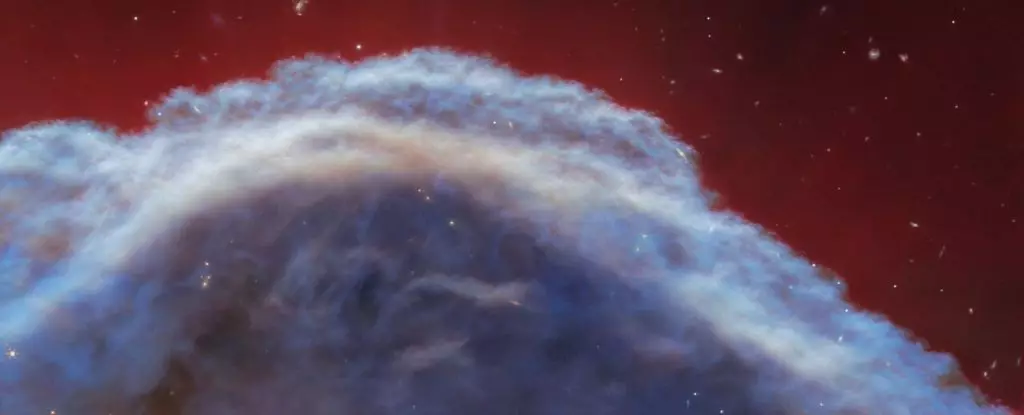The iconic Horsehead Nebula, located some 1,300 light-years away, has recently been examined in a new light thanks to the James Webb Space Telescope. This new perspective has unveiled previously unseen details of this cosmic cloud, shedding light on its composition and structure in stunning detail.
Through mid- and near-infrared observations, astronomers have been able to capture intricate features of the Horsehead Nebula, including tendrils and filaments that were not visible before. By utilizing 23 filters, the team was able to achieve remarkable resolution, allowing them to track emissions from particles as small as 20 nanometers. This includes interstellar polycyclic aromatic hydrocarbons, scattered light from larger grains, and ionized hydrogen.
Named for its resemblance to a horse’s head, the Horsehead Nebula is a dense cloud within the Orion molecular cloud complex. It is shrouded in dust and gas, appearing dark in optical light, yet transforming into a radiant cloud when viewed in different wavelengths. Despite lacking an internal light source, the nebula is heated by the nearby Sigma Orionis complex, contributing to its unique features.
The Horsehead Nebula serves as a valuable laboratory for studying stellar nurseries due to its combination of dense material and intense radiation from neighboring stars. The photodissociation process in the vicinity of the nebula, caused by far ultraviolet light, creates a neutral interstellar medium and a photodissociation region. Through JWST images, researchers can delve deeper into these phenomena and understand the evolution of dust and gas within the nebula.
The recent observations have provided scientists with a closer look at the intricate structures surrounding the Horsehead Nebula, revealing filaments and dust particles involved in the photoevaporative flow process. By analyzing the emitted light, researchers hope to uncover the chemical composition of the nebula’s components and track the evolution of dust grains. This detailed analysis will offer insights into how these cosmic clouds evolve and disperse over time, ultimately leading to the birth of new stars.
The groundbreaking observations of the Horsehead Nebula by the James Webb Space Telescope have brought about a deeper understanding of this enigmatic cosmic entity. By peering into the heart of this stellar nursery, researchers have unlocked a wealth of information that will pave the way for further discoveries in the realm of astrophysics.


Leave a Reply